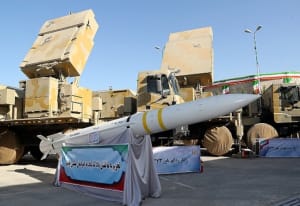Israel strikes Iranian military site near Isfahan – IAEA confirms no damage to nuclear sites
Israeli officials: Attacked site was used in assault against Israel

An Iranian military airbase near the city of Isfahan was struck by Israeli missiles that were fired from "long-distance aircraft" early on Friday morning, sources told The Jerusalem Post.
Israeli and Iranian officials had informed the New York Times earlier that the explosions reported near the town of Isfahan in central Iran were attributed to an Israeli assault.
This contradicts initial reports that the strike was carried out by long-range surface-to-surface ballistic missiles or drones.
There were no official statements by Israeli representatives at the time of publication.
The International Atomic Energy Agency (IAEA) confirmed that contrary to earlier reports, there was no damage to Iran’s nuclear sites, several of which are located in the Isfahan region.
IAEA can confirm that there is no damage to #Iran’s nuclear sites. DG @rafaelmgrossi continues to call for extreme restraint from everybody and reiterates that nuclear facilities should never be a target in military conflicts. IAEA is monitoring the situation very closely. pic.twitter.com/4F7pAlNjWM
— IAEA - International Atomic Energy Agency ⚛️ (@iaeaorg) April 19, 2024
The Iranian army intercepted several flying objects near Isfahan, the Iranian army's Chief of Staff Abdolrahim Mousavi said in the first official statement from the Iranian side shortly before noon on Friday.
He further added that the explosions heard in the area were the result of its air defense systems and refuted any claims of damage. Mousavi also did not implicate or accuse Israel of causing the incident.
The Jerusalem Post quoted an Israeli official as saying the base that was struck had been used by Iran in its drone and missile assault against Israel last Sunday.
Iranian news outlets initially reported that the attack was carried out by several drones, adding that Iranian air defenses shot down all of them.
Other Iranian reports suggested that a quadcopter drone was used, which has a short range and would imply that the strike was launched from nearby rather than from Israeli territory.
An Iranian weapons factory for the development and production of missiles in Isfahan had been attacked by a quadcopter in January 2023, in another strike attributed to Israel.
An Israeli source told the Washington Post that the airstrike inside Iran was meant to send a message that Israel has the ability to strike from within the country.
Before the attack, Israel’s Defense Minister Yoav Gallant spoke to his U.S. counterpart, U.S. Defense Secretary Lloyd Austin, about "regional threats and Iran's destabilizing actions,” KAN News reported.
“Iran’s response to the Damascus strike was a massive escalation,” said Brad Bowman of the Foundation for the Freedom of Democracies (FDD).
“What we’re seeing so far tonight is a very restrained response from Israel with a poignant message: Israel can hit anywhere it wants in Iran and doesn’t need 350 missiles and drones to do it,” Bowman added.
Simultaneously with the strikes in Iran, Syrian media outlets documented multiple explosions in southern Syria.
A Syrian opposition news outlet claimed that Israel had struck several military radar sites of the Syrian army near the towns of Dara’a and Suwaida, and not sites belonging to pro-Iranian proxy militias as other reports had suggested.
The Syrian regime later confirmed that Israeli strikes had damaged air defense sites in southern Syria.
We recommend to read:

The All Israel News Staff is a team of journalists in Israel.

















